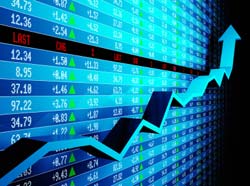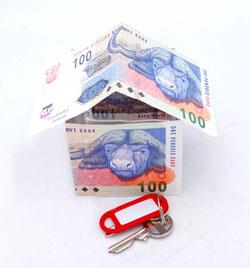After slowing to 2.5 percent in 2012, South African economic growth continued to underperform in the second half of 2013.

We expect economic growth to recover somewhat to 2.7 percent and to 3.2 percent in 2014 and 2015 respectively.
Real growth in Gross Domestic Product (GDP) moderated to an annualised rate of 0.7 percent quarter-on-quarter (q/q) in Q3 2013 from 3.2 percent in the second quarter.
This poor outcome was attributable to a moderation in real Gross Domestic Expenditure (GDE), which slowed from an annualised rate of 2.7 percent q/q in Q2 to 1.9 percent in Q3.
Import growth which exceeded export growth leading to a wider current deficit also contributed.
The slower growth in GDE was the result of a slower pace of increase in consumption expenditure by households and general government, which more than offset acceleration in fixed investment and a stronger increase in inventories.
We expect economic growth to recover somewhat to 2.7 percent and to 3.2 percent in 2014 and 2015 respectively.
Our growth forecast assumes a slight improvement in GDE and a narrower current account deficit.
In a nutshell, we expect economic growth to remain below potential, estimated at 3.5 percent by the South African Reserve Bank (SARB) over the forecast period ending in 2015.
Consumer spending to remain under pressure
Growth in household consumption expenditure, which grew by 4.9 percent in 2011 and by 3.5 percent in 2012, slowed to an annualised rate of 2.3 percent q/q in Q3 from 2.8 percent in Q2 – this is the slowest rate of increase since Q3.
The slowdown in household spending was mainly evident in the goods related categories.

We expect the Rand to average $/R10.20 for the year as a whole based on a weak first half of 2014 followed by a strengthening in the second half as evidence of a narrowing current account (external adjustment) gathers pace.
Expenditure on services picked up in Q3 after contracting in the second quarter.
The slower growth in spending on goods in the third quarter was due to rising prices of imported durables following the Rand’s depreciation, a slower pace of growth in real disposable income and credit extension and the loss of income associated with strike activity that occurred during the period.
A combination of weak employment growth, diminishing growth in government spending on wages and social transfers, slower growth in credit extension to households and low consumer confidence are expected to constrain the ability and the willingness of households to spend.
As a result, we anticipate continued moderate growth in household consumption expenditure amounting to 2.7 percent and 3.0 percent in 2014 and 2015 respectively.
Uncertainty holding back private fixed investment
Following a significant loss of momentum during the first half of 2013 growth in real gross fixed capital formation (GFCF/fixed investment) accelerated at an annualised 3.1 percent in Q3.
This was due to faster growth in capital outlays by the general government which accelerated at an annualised 9.7 percent q/q in Q3 from 2.5 percent in Q2 and spending on fixed investment by the public corporations also grew in Q3 after contracting in the second quarter.
The increase in capital spending by the public corporations was mainly evident in the electricity (Eskom) and transport (Transnet) sectors while the faster growth in fixed investment by general government was attributable to increased investment on public roads, water and sanitation projects.
In contrast, there was a slight moderation in the growth of fixed investment by the private sector to an annualised 2.6 percent q/q from 3 percent in Q2.
With the exception of the mining and transport sectors, capital spending moderated in most other sectors over the period.
We expect public sector fixed investment to remain strong underpinned by the ongoing government fixed investment programme.
This is likely to be supported by increasing efficiency in public spending as the various state capacity building interventions undertaken over the last few years at the provincial and municipal levels bear fruit leading to a decline in the under spending of government investment budgets.
However, the uncertainty brought about by weak and fragile domestic economic growth and the fractious labour environment, which is hurting business confidence, is expected to keep private sector fixed investment muted in the short term.

Continued moderate growth in household consumption expenditure amounting to 2.7 percent and 3.0 percent in 2014 and 2015 respectively is expected.
The improvement in global economic growth led by the advanced economies, stabilising commodity prices and the strong balance sheets of South African firms imply some upward risk to the outlook for private sector fixed investment especially if domestic labour relations improve.
We expect growth in fixed investment to improve to 3.7 percent in 2014 rising to 5.0 percent in 2015.
A slow external adjustment
South Africa’s key macroeconomic vulnerability, the large deficit on the current account of the balance of payments worsened during the third quarter.
This was due to continued strong growth in import volumes and higher import prices as a consequence of the weak rand.
The volume of South African imports increased by 4.0 percent in the third quarter with all the major import categories, namely agriculture, manufacturing and mining advancing over the period.
The price of merchandise imports rose by 3.5 percent up from 2.5 percent in Q2 adversely affected by further Rand weakness and a higher oil price – this increase coupled with higher import volumes resulted in the value of South African imports rising by 7.7 percent.
Although labour unrest and structural obstacles have hampered domestic production, South African export volumes rose by 4 percent in Q3 2013 from 0.9 percent in Q2 as global economic activity improved.
Fortunately South Africa continued to attract large inflows of portfolio and direct foreign investment in the third quarter defying investor concerns about Fed tapering, poor growth and labour disruptions.
Inward FDI increased to R47.4 billion in from R16.6 billion in the second quarter.
The combination of muted domestic demand and the weak Rand is expected to stabilise import demand at lower levels. Exports are likely to find support from continued improvement in global growth, a rebound in manufacturing production as the negative impact of strike activity in the vehicle manufacturing sector unwinds and the weaker Rand.
Inflation risks are rising
Headline consumer price inflation has increased gradually from a recent low of 4.9 percent y/y in July 2012, but remained within the inflation target range until July and August 2013 when it accelerated notably peaking at 6.4 percent.

Growth in fixed investment to improve to 3.7 percent in 2014 rising to 5.0 percent in 2015.
The marked acceleration in consumer price inflation during the third quarter could mainly be attributed to higher petrol prices and to a lesser extent, higher food prices.
Consumer price inflation thereafter moderated to 5.5 percent and 5.3 percent in October and November respectively due to favourable base effects that triggered a slowdown in food and petrol price inflation.
Rising domestic soft commodity prices, the weak Rand and rising unit labour costs are likely to exert upward pressure on inflation.
We expect consumer price inflation to average 5.7 percent in 2014 unchanged from 2013, while inflation is expected to moderate to 5.4 percent in 2015.
The risk to our inflation forecast is further and sustained weakness in the Rand. The current level of the Rand poses a significant upside risk to the inflation outlook to the extent that it is sustained. Our inflation forecast assumes that the Rand will strengthen during the second half of 2014.
South Africa is a small open economy with large current account and budget deficits.
The funding of these deficits may become increasingly challenging in an environment in which the US Federal Reserve has begun to reduce the size of its monthly asset purchases.
This will likely keep the Rand weak during the early parts of 2014, however, we expect the more competitive exchange rate to act as a shock absorber and curtail imports while supporting exports.
The improvement in global economic growth is also likely to support exports while weak domestic demand should have a dampening effect on imports.
We anticipate that the current account will narrow as a result leading to a strengthening of the Rand over the course of the year.
We expect the Rand to average $/R10.20 for the year as a whole based on a weak first half of 2014 followed by a strengthening in the second half as evidence of a narrowing current account (external adjustment) gathers pace.
The Rand will strengthen further in 2015 averaging $/R9.80.
Interest rate outlook
We maintain our view that that the SARB will keep interest rates on hold in 2014 and only start the rate hiking cycle in the first quarter of 2015.
However, the risk of earlier hikes than we currently expect has increased significantly in the last two months.
In our view the SARB will not want to hike rates in the current environment of weak growth, a large output gap and limited pricing power.
Furthermore, inflation expectations as surveyed by the Bureau for Economic Research are anchored at the upper end of the inflation target range and as such remain reasonably well behaved.
The risk facing the SARB in our view is the Rand that remains at current levels or weakens further and this would intensify pressures of exchange rate pass-through placing significant upward pressure on inflation and raise inflation expectations.
In such a scenario the SARB would likely begin the rate hiking cycle sooner than we currently expect. - Sizwe Nxedlana









